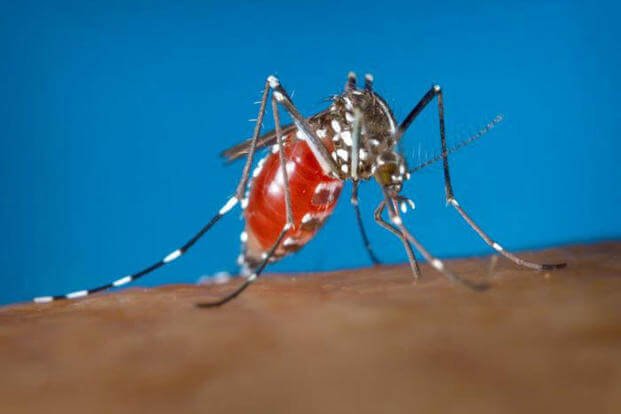FALLS CHURCH, Va. — Navy Medicine released Zika Virus Infection guidance in NAVADMIN 032/16, Feb. 10, communicating force health protection measures and travel precautions to Navy and Marine Corps personnel.
"Our first priority is to ensure we offer the best possible care to any Navy Medicine patient in the safest way possible," said Cmdr. Eric Deussing, head, U.S. Navy Bureau of Medicine and Surgery (BUMED) public health, emergency preparedness and response.
BUMED has instructed Navy Medicine providers to follow guidelines issued by the Centers for Disease Control and Prevention (CDC). In addition, Navy Marine Corps Public Health Center issued an information sheet and trifold pamphlet on their public website for Navy and Marine Corps personnel.
"We are closely monitoring the situation and collaborating with our public health partners to protect our patients and our communities," said Deussing.
Zika is a viral infection spread by mosquito bites. The virus is spread by a bite from an infected mosquito or possibly by a mother to her fetus during pregnancy. According to the CDC, spread of the virus through blood transfusion and sexual contact has also been reported. Typical symptoms include fever, conjunctivitis, muscle pain, rash, headache, and joint pain.
Recently, Zika virus infections in pregnant women have been linked to infants born with birth defects. Zika virus transmission is predominantly occurring in South and Central America, Mexico, and the Caribbean.
Navy and Marine Corps personnel are at risk when travelling to areas experiencing ongoing Zika virus transmission. Infection risk is reduced by taking measures to avoid mosquito bites.
"Prevention amongst the Navy and Marine Corps personnel is paramount," Deussing said. "The most effective way to prevent infection is avoiding unnecessary travel to Zika affected areas. If traveling to Zika affected areas, avoid mosquito bites."
No vaccine or drug is currently available to prevent Zika virus infection, and there is currently no specific anti-viral treatment for the disease. The best way to prevent infection is to avoid mosquito bites while in areas of ongoing transmission. Mosquitoes that spread Zika virus bite mostly during the daytime, but bites should be avoided day and night.
Until more is known, and out of an abundance of caution, the CDC recommends pregnant women consider postponing travel to any area where Zika virus transmission is occurring — currently in the Western Hemisphere. Pregnant women, or women trying to become pregnant, who do travel to these areas should talk to their health care provider first, and they should take strict steps to avoid mosquito bites during the trip.
The following steps are recommended for those traveling to an area with ongoing Zika virus transmission:
- Choose a hotel or lodging with air conditioning or with screens on windows and doors.
- Sleep under a mosquito bed net if you are outside or in a room that is not well screened.
- Cover exposed skin by wearing long-sleeved shirts and long pants.
- Use EPA-registered insect repellents containing DEET, picaridin, or IR3535. These are safe for pregnant women when used as directed.
- Use permethrin-treated clothing and equipment.
"If you or someone you know develops sudden fever, rash, joint aches, or red, irritated eyes within two weeks of travelling to an area of ongoing Zika virus transmission, see your Navy Medicine health care provider immediately, and report your symptoms and travel history," Deussing said.
Navy Medicine is a global health care network of 63,000 personnel that provide health care support to the U.S. Navy, Marine Corps, their families and veterans in high operational tempo environments, at expeditionary medical facilities, medical treatment facilities, hospitals, clinics, hospital ships and research units around the world.





























